How to Choose a Mattress: Buying Guide
One of the key factors in achieving quality sleep is having the right mattress. The right mattress can help you wake up feeling refreshed and ready to take on the day. Of course, you may be wondering how to choose a good mattress.
This mattress buying guide covers key factors for choosing a mattress, including types, firmness, size, sleeping position, pain relief, and budget considerations.
Choose By:
Mattress Types
If you’re wondering what to look for when buying a mattress, you should start with understanding the different types available. Each mattress type has its unique features, and some are better suited for certain sleep styles than others. Let’s take a closer look at the most common mattress types and who they are best for.
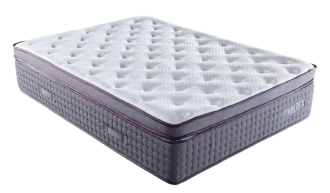
Pocket Sprung Mattresses
Pocket sprung mattresses are made with individual springs sewn into their own fabric pockets. This design allows each spring to move independently, providing better support for your body. It also means less motion transfer, so if your partner moves around at night, you’re less likely to feel it.
Best For:
All sleep positions
People who prefer a traditional, bouncy feel
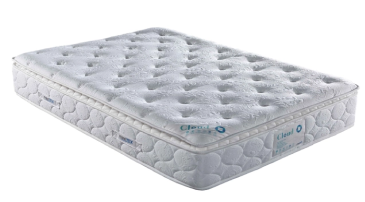
Memory Foam Mattresses
Memory foam mattresses are made from a special type of foam that moulds to the shape of your body. This helps relieve pressure points and reduces movement across the bed, so you won’t be disturbed if your partner moves around at night. The foam also absorbs motion effectively, ensuring a more uninterrupted sleep.
Best For:
Side sleepers
People with joint pain
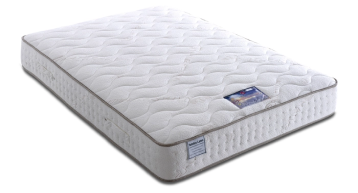
Latex Mattresses
Latex mattresses are made from natural or synthetic rubber, making them very durable and bouncy. They offer great support and are resistant to dust mites and mould, which is great for people with allergies. Latex also sleeps cooler than memory foam, making it a good choice if you tend to get hot at night.
Best For:
All sleep positions
People with allergies
Hot sleepers
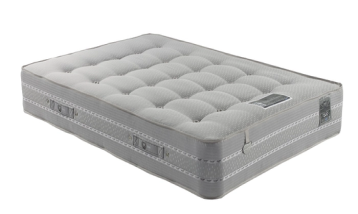
Hybrid Mattresses
Hybrid mattresses combine the best of both worlds by using a mix of pocket springs and foam layers. This design provides the support of a sprung mattress, with the pressure relief of foam. Hybrids are great if you want a balanced feel that’s not too firm or too soft.
Best For:
All sleep positions
Couples with different sleep preferences
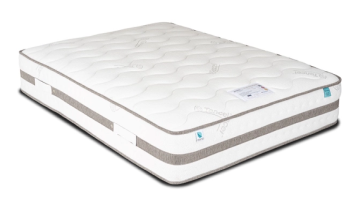
Gel Mattresses
Gel mattresses are similar to memory foam but have gel infused into the foam layers. The gel helps draw heat away from the body, keeping you cooler throughout the night. These mattresses also offer good support and pressure relief, similar to regular memory foam.
Best For:
Side sleepers
Hot sleepers
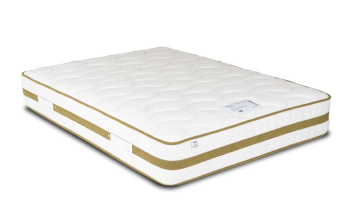
Open Coil Mattresses
Open coil mattresses, also known as continuous coil or traditional innerspring mattresses, are made from a single wire that forms multiple springs. These mattresses are usually more affordable but may not offer as much support or comfort as other types.
Best For:
Back sleepers
People on a budget
Guest rooms
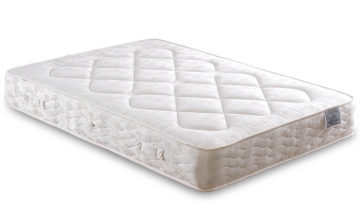
Orthopaedic Mattresses
Orthopaedic mattresses are specifically designed to provide extra support, especially for the back and joints. They are usually firmer than other mattresses and are aimed at people who need more support due to back pain or other medical conditions.
Best For:
Back sleepers
People with back pain
People who prefer a firm mattress
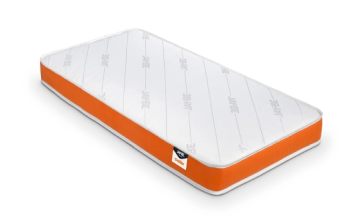
Kids Mattresses
Kids mattresses are made with smaller sizes and a range of materials that cater to growing children. These mattresses often have a good balance of support and comfort to suit lighter body weights and are designed to be durable and long-lasting.
Best For:
Children
Parents looking for durable options
Bunk beds
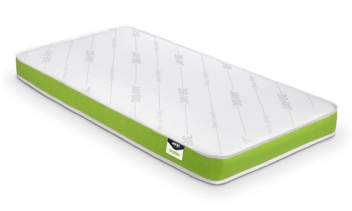
Toddler Mattresses
Toddler mattresses are typically smaller and firmer than regular mattresses to provide the support needed for young children transitioning from a cot to a bed. They are often water-resistant and easy to clean, considering the needs of toddlers.
Best For:
Toddlers transitioning from a cot
Parents looking for easy-to-clean options
Beds with guard rails
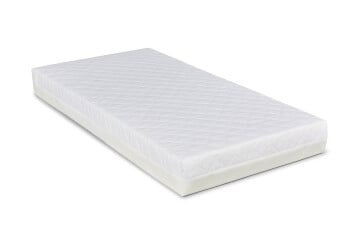
Cot Mattresses
Cot mattresses are designed for infants and are smaller and firmer than other mattresses to provide safe sleeping conditions. They come in various materials, including foam, latex, and natural fibres, and often have waterproof covers for easy cleaning.
Best For:
Infants
Parents needing a safe, easy-to-clean mattress
Cribs and cots
Comparison of Mattress Types
| Mattress Type | Best For | Key Features |
|---|---|---|
| Memory Foam | Side sleepers, those with joint pain, and couples. | Excellent pressure relief, motion isolation, retains heat. |
| Latex | Eco-conscious sleepers, back and stomach sleepers. | Durable, naturally breathable, hypoallergenic, bouncy. |
| Hybrid | Couples, combination sleepers | Balanced support and comfort, good motion isolation |
| Gel | Hot sleepers, people wanting pressure relief | Cooling properties, pressure relief, motion isolation |
| Pocket Sprung | Hot sleepers, people who prefer a bouncy feel | Good support, excellent airflow, less motion transfer. |
| Open Coil | People on a budget, guest rooms, back sleepers | Affordable, lightweight, suitable for temporary use. |
| Orthopaedic | People with back pain, back sleepers | Extra firm, supports proper spinal alignment |
| Open Coil | People on a budget, guest rooms, back sleepers | Affordable, lightweight, suitable for temporary use. |
| Kids Mattresses | Children, bunk beds | Good support, durable, suitable for lighter body weights |
| Toddler Mattresses | Toddlers transitioning from a cot | Firm support, often water-resistant, easy to clean. |
| Cot Mattresses | Infants, cribs, cots | Firm, supportive, safe for infants. |
Mattress Firmness
The firmness of a mattress affects how much support and comfort you get while sleeping. Firmness is often rated on a scale from 1 to 10, with 1 being the softest and 10 being the firmest. Your ideal firmness depends on factors like your sleeping position, body weight, and personal comfort needs, as different levels of firmness suit different preferences.
Soft Mattresses (1-3)
Soft mattresses are plush and cushiony. They allow you to sink deeply into the bed, which can be great for side sleepers as it helps to relieve pressure on the shoulders and hips. However, they may not provide enough support for heavier individuals or back and stomach sleepers.
Best For:
Side sleepers
Those seeking pressure relief on shoulders and hips
Medium-Soft Mattresses (4-5)
Medium-soft mattresses offer a good amount of softness while still providing adequate support. This level is ideal for side sleepers who seek a balance between comfort and support, as well as combination sleepers who frequently change positions throughout the night.
Best For:
Side sleepers
Combination sleepers
Medium Mattresses (6-7)
Medium mattresses are the most popular choice because they offer a balance of comfort and support. They are great for back sleepers and combination sleepers. This firmness level provides enough support to keep your spine aligned while still being soft enough to cushion your body.
Best For:
Back sleepers
Combination sleepers
Medium-Firm Mattresses (7-8)
Medium-firm mattresses are slightly firmer and offer more support. They are ideal for back sleepers and stomach sleepers, especially those with a heavier body weight. This firmness level helps prevent the hips and midsection from sinking too deeply into the mattress, which can lead to back pain.
Best For:
Back sleepers
Stomach sleepers
Heavier individuals
Firm Mattresses (9-10)
Firm mattresses provide the most support and have very little give. They are best for stomach sleepers, as they help keep the spine in a neutral position. They are also suitable for heavier individuals who need more support to avoid sinking too deeply into the mattress.
Best For:
Stomach sleepers
Heavier individuals
Comparison of Mattress Firmness Types
| Firmness Level | Firmness Scale | Sleeping Position | Body Weight |
|---|---|---|---|
| Soft | 1-3 | Side sleepers | Under 60 kg |
| Medium-Soft | 4-5 | Side sleepers, combination sleepers | 60-100 kg |
| Medium | 6-7 | Back sleepers, combination sleepers | 60-100 kg |
| Medium-Firm | 7-8 | Back sleepers, stomach sleepers | Over 100 kg |
| Firm | 9-10 | Stomach sleepers | Over 100 kg |
Mattress Size
Choosing the right mattress size is just as important as picking the right type or firmness. The size of your mattress can affect your comfort, sleep quality, and even the overall look and feel of your bedroom. When selecting a mattress size, you should consider factors like room dimensions, whether you share the bed, and your personal preferences for sleeping space.
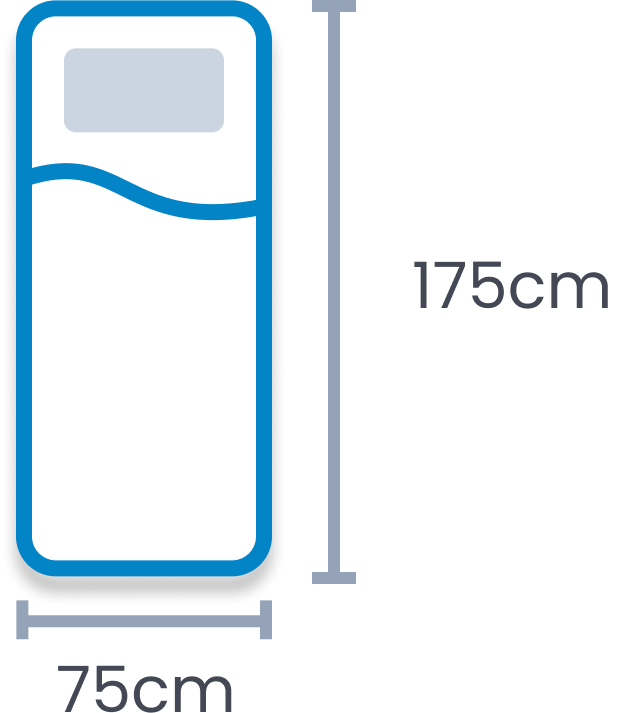
Shorty (75 x 175 cm)
Shorty mattresses are smaller than a standard single, making them perfect for young children or toddlers who have outgrown their cot but aren’t ready for a full-sized bed. They are great for children's bedrooms where space might be limited.
Best For:
Young children
Toddlers
Room Size: Children’s bedroom
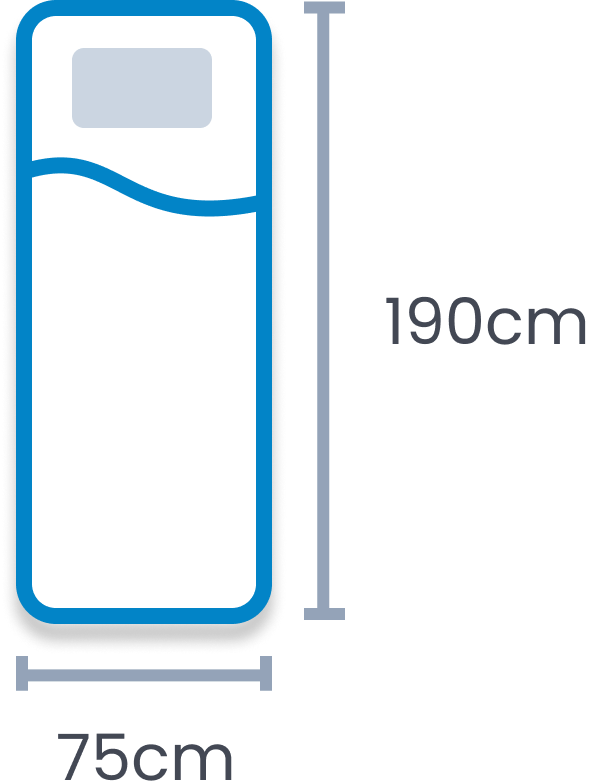
Small Single (75 x 190 cm)
Small single mattresses are ideal for children, teenagers, or even guests. They are slightly longer than shorty mattresses, providing extra legroom, and work well in small bedrooms or guest rooms.
Best For:
Children
Teenagers
Guests
Room Size: Small bedrooms or guest rooms
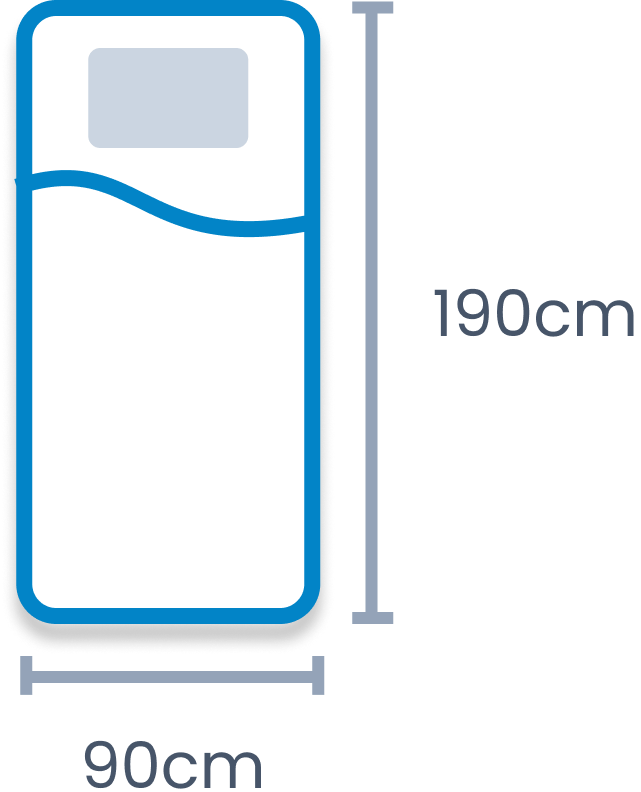
Single (90 x 190 cm)
Single mattresses are a popular choice for children, teenagers, and single adults. They offer more width than a small single, making them comfortable for most sleepers. Single mattresses fit well in small bedrooms or guest rooms and can be used for bunk beds or daybeds.
Best For:
Children
Teenagers
Single adults
Room Size: Small bedrooms or guest rooms
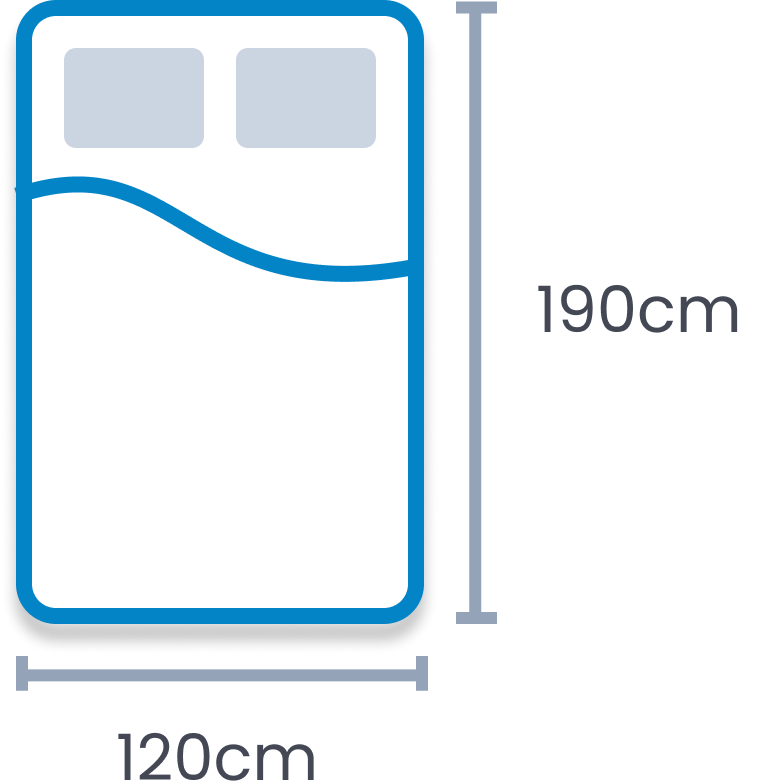
Small Double (120 x 190 cm)
Small double mattresses, also known as “three-quarter” beds, offer more width than a single but less than a standard double. They provide extra space for single sleepers who want more room to stretch out or for teenagers who prefer a larger bed. Small doubles fit well in small to medium-sized bedrooms.
Best For:
Single sleepers who need extra space
Teenagers
Room Size: Small to medium-sized bedrooms
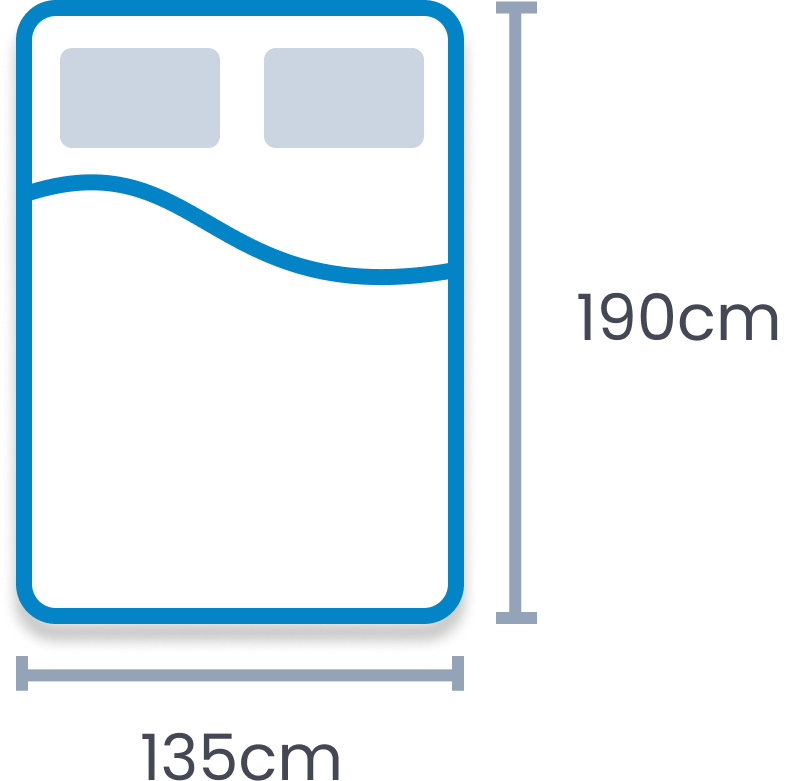
Double (135 x 190 cm)
Double mattresses are a common choice for couples or single sleepers who like more space. They provide enough room for two people to sleep comfortably while still fitting in medium to large bedrooms. A double mattress is a versatile option that balances space and comfort.
Best For:
Couples
Single sleepers who like more space
Room Size: Medium to large bedrooms

King (150 x 200 cm)
King mattresses are larger than doubles, offering extra width and length. They are perfect for couples who want more space to spread out or those who prefer a more luxurious sleeping experience. King-size mattresses require a larger bedroom to fit comfortably without making the room feel cramped.
Best For:
Couples who need extra space to spread out
Room Size: Larger bedrooms

Super King (180 x 200 cm)
Super king mattresses are the largest standard size available, offering maximum space for couples or families who share the bed. They provide ample room for stretching out and are ideal for those who enjoy a lot of personal space. A super king mattress is best suited for large bedrooms or master suites.
Best For:
Couples who want maximum space
Families sharing the bed
Room Size: Large bedrooms or master suites
Comparison of Mattress Sizes
| Mattress Size | Dimensions (UK) | Best For | Room Size |
|---|---|---|---|
| Shorty | 75 x 175 cm | Young children, toddlers | Children’s bedroom |
| Small Single | 75 x 190cm | Children, teenagers, and guests | Small bedrooms or guest rooms. |
| Single | 90 x 190 cm | Children, teenagers, and single adults | Small bedrooms or guest rooms |
| Small Double | 120 x 190 cm | Single sleepers who need extra space, teenagers | Small to medium-sized bedrooms |
| Double | 135 x 190 cm | Couples or single sleepers who like more space | Medium to large bedrooms |
| King | 150 x 200 cm | Couples who need extra space to spread out | Larger bedrooms |
| Super King | 180 x 200 cm | Couples who want maximum space, families sharing the bed | Large bedrooms or master suites |
Sleeping Positions
Your sleeping position is a key factor in determining the best mattress for you. Different sleeping positions create different pressure points on the body, so it's essential to choose a mattress that provides the appropriate support and comfort. Let's look at the main sleeping positions and the types of mattresses that are best suited for each.
Side Sleepers
Side sleepers rest on their side, either in a curled-up fetal position or stretched out. This position is generally comfortable, but it often puts extra pressure on the shoulders and hips. Memory foam and latex mattresses are ideal for side sleepers because they mould to the body's shape, cushioning pressure points and maintaining a neutral spine.
Ideal Mattress Type:
Soft to medium mattresses
Memory Foam
Latex
Back Sleepers
Back sleepers lie flat on their back, with their weight evenly spread across the mattress. They need a mattress that supports natural spinal alignment without causing the lower back to arch excessively. A medium-firm to firm mattress is perfect for back sleepers because it provides the necessary support to keep the spine aligned. Open coil and hybrid mattresses are ideal, balancing support and comfort to prevent excessive sinking of the lower back.
Ideal Mattress Type:
Medium-firm to firm mattresses
Open Coil
Hybrid
Stomach Sleepers
Stomach sleepers rest face down on the mattress, which can strain the neck and lower back. This position requires a firmer mattress to keep the body well-supported and prevent the hips from sinking. Firm mattresses are best for stomach sleepers as they provide the support needed to maintain a neutral spine position. Latex and firm open coil mattresses offer the firmness required to prevent sinking while still ensuring comfort.
Ideal Mattress Type:
Firm mattresses
Latex
Open Coil
Combination Sleepers
Combination sleepers are those who switch between different sleeping positions during the night. This type of sleeper needs a versatile mattress that can support multiple positions, offering a balance of comfort and support. Hybrid mattresses and responsive memory foam mattresses are perfect for combination sleepers because they provide a mix of support and comfort suitable for various positions.
Ideal Mattress Type:
Medium to medium-firm mattresses
Hybrid
Responsive Memory Foam
| Sleeping Position | Ideal Mattress Type |
|---|---|
| Side Sleepers | Soft to medium mattresses (Memory Foam, Latex) |
| Back Sleepers | Medium-firm to firm mattresses (Open Coil, Hybrid) |
| Stomach Sleepers | Firm mattresses (Latex, Firm Open Coil) |
| Combination Sleepers | Medium to medium-firm mattresses (Hybrid, Responsive Memory Foam) |
Body Type
Different body types require varying levels of support and firmness in a mattress to ensure comfort and proper spinal alignment. The right mattress can provide the necessary balance of support and cushioning, which is essential for a good night's sleep. Let's explore the different body types and the ideal mattresses for each.
Lightweight Sleepers (Under 60 kg)
Lightweight sleepers, those weighing under 60 kg, generally need a mattress that provides enough cushioning to conform to their body shape. A mattress that is too firm might not compress under their lighter weight, leading to pressure points and discomfort. Softer mattresses allow for more contouring, which helps distribute weight evenly and provides a cosy, comfortable feel.
Memory foam or plush hybrids provide the necessary contouring to distribute weight evenly and ensure a comfortable sleep. Memory foam moulds to the body’s contours, while plush hybrids combine the softness of foam with supportive springs for a balanced feel.
Ideal Mattress Type:
Soft to medium mattresses
Memory Foam
Plush Hybrid
Average Weight Sleepers (60-100 kg)
Average-weight sleepers, those weighing between 60 and 100 kg, typically need a mattress that strikes the right balance between support and comfort. Because they exert a moderate amount of pressure on the mattress, it's important to find one that supports their body weight evenly while also providing enough cushioning to maintain comfort throughout the night.
Open coil mattresses offer a traditional, supportive feel that works well for average-weight sleepers. Hybrid mattresses, which combine foam layers with springs, provide both support and contouring, making them a versatile choice for those in this weight range.
Ideal Mattress Type:
Medium to medium-firm mattresses
Open Coil
Hybrid
Heavyweight Sleepers (Over 100 kg)
Heavyweight sleepers, individuals weighing over 100 kg, need a mattress that offers more support to prevent them from sinking too deeply into the bed. A firmer mattress helps distribute weight more evenly. Firmer mattresses are better at maintaining their shape and providing the necessary support over time.
Latex mattresses are a great option because they are both firm and responsive. Firm hybrid mattresses and high-density foam mattresses also offer the necessary firmness and support to keep the spine aligned while preventing excessive sinking.
Ideal Mattress Type:
Firm mattresses
Latex
Firm Hybrid
High-Density Foam
| Body Type | Ideal Mattress Type |
|---|---|
| Lightweight Sleepers (under 60kg) | Soft to medium mattresses (Memory Foam, Plush Hybrid) |
| Average Weight Sleepers (60-100kg) | Medium to medium-firm mattresses (Open Coil, Hybrid) |
| Heavyweight Sleepers (over 100kg) | Firm mattresses (Latex, Firm Hybrid, High-Density Foam) |
Budget
Mattresses can vary widely in price, but the good news is that you can find a quality option at almost any budget level. Whether you're looking for a basic mattress or a luxury one, there are plenty of choices available. Here’s a breakdown of what you can expect in different budget ranges and some recommendations to help you find the best mattress for your needs.
Low Budget (Under £500)
If you’re on a tighter budget, there are still many decent options available. In the low-budget price range, mattresses are usually made with basic materials, such as open coil springs or lower-density memory foam. These mattresses may have a shorter lifespan and fewer features compared to higher-end models, but they can still provide adequate comfort and support for those on a budget.
What to Expect:
Basic materials like open coil or lower-density memory foam. Shorter lifespan, fewer features.
Recommended Mattress Type:
Open Coil
Basic Memory Foam
Budget Hybrid
Mid-Range Budget (£500 - £1,000)
For those with a mid-range budget, there’s a good balance of quality, comfort, and durability. Mattresses in this price range often come with more advanced features, such as enhanced support systems or higher-density foam that provides better comfort and pressure relief. They also tend to have longer lifespans due to the use of higher-quality materials.
What to Expect:
Balanced quality with a mix of comfort and durability. Advanced features available.
Recommended Mattress Type:
Medium to High-Density Foam
Hybrid
Latex
High Budget (Over £1,000)
If you have a high budget, you’ll find a wide selection of luxury mattresses that use premium materials and feature advanced comfort technologies. These mattresses often include natural and organic options like natural latex, organic cotton, and high-density memory foam. You can also expect features like zoned support systems that target specific areas of your body and strong edge support for more usable space.
What to Expect:
Premium materials and features, longer lifespan. Luxury and customisable options.
Recommended Mattress Type:
Luxury Hybrid
Natural Latex
High-End Memory Foam
| Budget Category | Price Range | Recommended Mattress Types |
|---|---|---|
| Low Budget | Under £500 | Open Coil, Basic Memory Foam, Budget Hybrid |
| Mid-Range Budget | £500 - £1,000 | Medium to High-Density Foam, Hybrid, Latex |
| High Budget | Over £1,000 | Luxury Hybrid, Natural Latex, High-End Memory Foam |
Special Considerations
When choosing a mattress, there are some additional factors to consider beyond just the type, firmness, and size. Your unique needs and preferences, such as whether you tend to sleep hot, suffer from back pain, or have allergies, can all influence which mattress is best for you. Let’s look at some of these special considerations and suggest the ideal mattress types for each.
Hot Sleepers
If you tend to get hot at night, it’s essential to find a mattress that helps regulate body temperature and keeps you cool. Some mattresses retain more heat than others, making them uncomfortable for hot sleepers. Look for mattresses with breathable materials and good airflow to help keep you cool.
Ideal Mattress Type:
Gel Memory Foam
Latex
Hybrid with Cooling Technology
Motion Isolation
If you share your bed with a partner, you might be disturbed by their movements during the night. Mattresses with good motion isolation can help reduce the transfer of motion, so you’re less likely to be woken up when your partner moves or gets out of bed.
Ideal Mattress Type:
Memory Foam
Pocket Sprung
Hybrid
Back Pain
For those who suffer from back pain, choosing the right mattress is crucial for alleviating discomfort and providing proper spinal support. A mattress that is too soft can cause the spine to sag, while one that is too firm may not provide enough cushioning for the joints.
Ideal Mattress Type:
Orthopaedic
Medium-Firm to Firm Memory Foam
Hybrid
Allergies
If you suffer from allergies, you’ll want to choose a mattress that is hypoallergenic and resistant to dust mites, mould, and other allergens. Some mattress materials are better at repelling allergens than others, helping you maintain a healthier sleep environment. Our range of eco-friendly and vegan mattresses are designed with this in mind.
Ideal Mattress Type:
Latex
Memory Foam
Anti-Allergy Treated Mattresses
Pressure Relief
If you experience joint pain or prefer a mattress that cushions pressure points like the shoulders and hips, you'll need a mattress that offers good pressure relief. This is especially important for side sleepers who put more pressure on these areas.
Ideal Mattress Type:
Memory Foam
Plush Hybrid
Pillow-Top
Edge Support
If you tend to sleep near the edge of the bed or need help getting in and out of bed, a mattress with strong edge support can provide more stability and prevent sagging. This is also beneficial for couples who want to use the full surface area of the mattress.
Ideal Mattress Type:
Hybrid
Innerspring with Reinforced Edges
High-Density Foam
